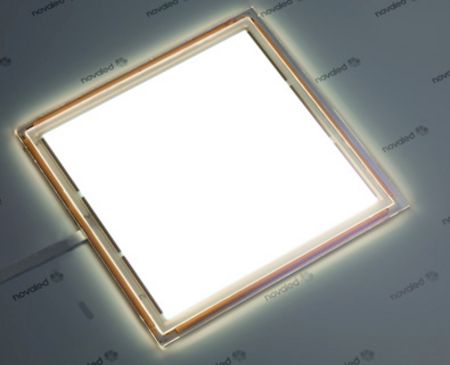
LEDs have been replacing traditional lighting at a rapid pace, offering longer life times, more efficiency, lower cost, etc. OLED lighting promises to complement LED lighting by offering better color performance, power efficiency, unique shapes and designs, as well as a thin, lower weight and elegant profile. To enable OLED technology in this emerging lighting market, there is a need to replace traditional materials with new, better-performing materials such as silver nanowires.
Figure 1. Image of Silver Nanowires at 70° tilt
Silver Nanowires
In an OLED device, the top electrode is made of a transparent conductor and plays an important role in light transmission/efficiency. A transparent conductor made of silver nanowires allows for high conductivity with excellent transmission and acts as the top electrode/anode in the case of an OLED lighting system. Silver nanowires in the top electrode are used in the form of a network of wires (see Figure 1) that are a few nanometers thick and a few micrometers in length. With silver being the best conductor on the planet, the network of overlapping nanowires offers conductivity less than 10 ohms/sq while allowing 94 percent of the light to go through the percolated network.
Figure 2. High transmission of silver nanowires at low resistance (Photo courtesy – ClearOhm silver nanowire material by Cambrios Technologies)
Aesthetic Lighting
OLED lighting is not a point source and, therefore, does not need to be diffused or set at a distance from the area that needs to be lit. OLEDs emit light all through their surface and can be used to create aesthetically pleasing lighting structures of various forms and sizes. Imagine an elegantly shaped lampshade emitting light instead of the shade diffusing the light from the lamp within. Lights in any form factor that needs to be bent, curved or flexed, needs flexible transparent conductors. This can be achieved easily through the use of silver nanowires rather than thick and brittle conductors.
Figure 3. OLED lighting tiles. Photo courtesy – Panasonic
OLED devices can serve a dual purpose of being a window or a light. They can be made transparent – a window that you can see thru during the day and that would emit light at night. The skylights and car sunroof could not only allow ambient light to enter, also could become lamps at night. In such applications, it is important to have very transparent layers of OLED materials, another area where silver nanowire networks play a huge role.
In addition, OLED lighting can offer shades of color previously not possible with conventional lighting. Better color tuning is possible with silver nanowires, and OLED lights can offer a more precise shade of color for premium lighting applications.
2.5D Lighting
OLED lights can be produced on plastic substrates and coated with silver nanowires. These types of flexible and rugged form factors can be deployed on non-flat surfaces, such as the dashboard of a car. This type of 2D and 2.5D lighting systems are very desirable in high-end consumer devices, retail stores and museums where any surface can provide changeable color. The traditional transparent conductor materials like ITO (indium tin oxide) are brittle and don’t lend themselves to bending or shaping, hence newer materials such as silver nanowires, which are malleable and ductile, are preferred.
Thinner, Lightweight, Rugged
Silver nanowires complement OLED in that both materials are thin, lightweight and very rugged. The thin and lightweight features make them suitable for applications such as aircraft lighting and illuminating skyscrapers, and the rugged nature of the system (both OLED and silver nanowires can be coated on plastic or thin glass) makes them suitable for outdoor public venues, which typically require lighting that is not only bright but also unbreakable.
Conclusion
LED and OLED technologies will reshape the lighting market with more efficient devices that require less power and offer flexibility in design at lower overall cost. While LED technology is way ahead in replacing conventional lighting technologies, OLED lights will follow and offer lighting solutions that we have never had before. Silver nanowire technology has begun to enable these emerging applications.



